Wednesday, August 1, 2007
 The Land Rover Freelander was rumored to grow bigger to make way for 2 extra seats from the conventional 5 seats. The rumor has been speculating in the car industry for 6 years now. Company bosses are saying there will be no such vehicle but AutoExpress UK claim its heading for production.
The Land Rover Freelander was rumored to grow bigger to make way for 2 extra seats from the conventional 5 seats. The rumor has been speculating in the car industry for 6 years now. Company bosses are saying there will be no such vehicle but AutoExpress UK claim its heading for production.
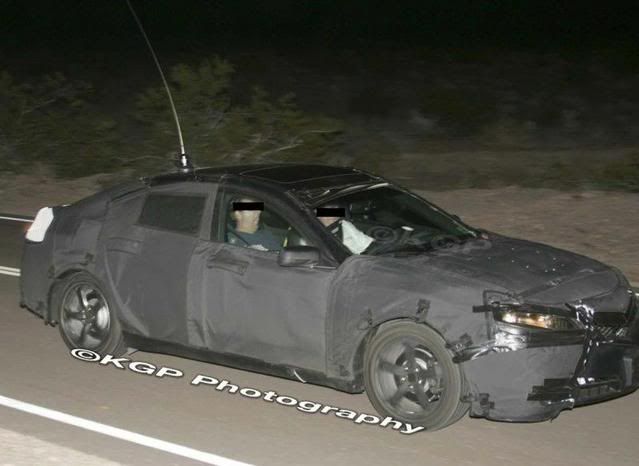
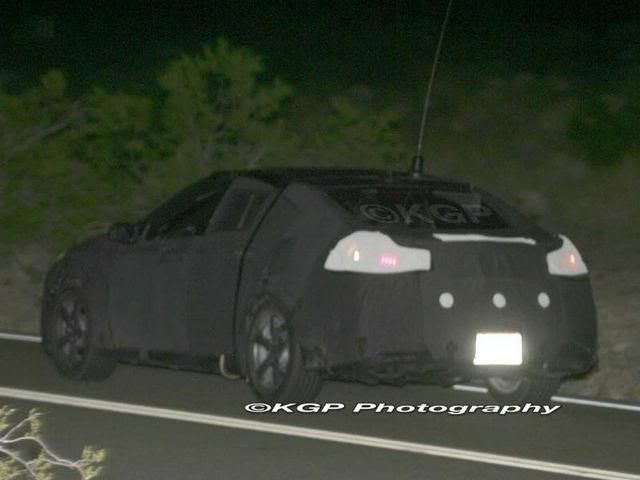
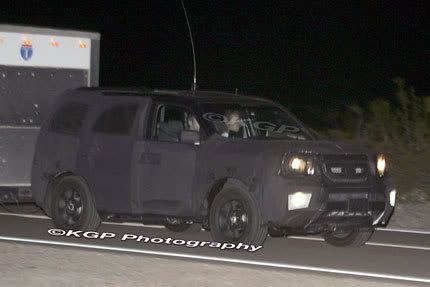 We caught a new Acura sedan prototype night-testing in the California desert. The late-night testing was a pretty grueling affair for all involved, and the yawning test driver caught in our front-¾ shot seemed to agree.
We caught a new Acura sedan prototype night-testing in the California desert. The late-night testing was a pretty grueling affair for all involved, and the yawning test driver caught in our front-¾ shot seemed to agree.
Just which Acura model we’re dealing with here isn’t exactly clear. Our personal observations of this prototype were limited to spotting a pair of headlights through the camera’s viewfinder, tracking it and trying to maintain focus, then freezing the action with the flash. Since we can say that we never really “saw” this car with the naked eye, judging it’s size is more difficult than normal daylight situations. It looks like it’s quite big in the photos, perhaps even Acura RL, big. But industry sources like Automotive News post that the next RL isn’t due until 2010 or 2011, which may be a bit far out for a test such as this. Automotive News reports that both the TL and the TSX are due for redesigns in 2009, which seems more likely to yield finished confirmation prototypes testing out in public, albeit in the inky dark of the desert. With that in mind, the apparent size of this prototype would seem to suggest that this is the new TL.
Regardless of its designation, we can see that the Acura front-end styling cues pioneered on the TL and TSX will be continued, but to an even more dramatic degree. Acura’s pointed grille now plunges well down into the front bumper, and the slitty headlights follow a similar angle, looking quite sinister in their execution. The way the camouflage is piled-on above the Acura’s mesh grille, we wonder if this new sedan will get a variation of the “shield” found on the latest MDX and also on Acura’s wacky Advanced Sedan Concept. The prototype’s lower air-intakes resemble those on the TL, but once again they look a bit more aggressive.
Although the prototype was still thoroughly camouflaged, it appears that this new Acura sedan will get a more flowing greenhouse than any current Acura model. The roofline sweeps smoothly from the A-pillar, into a steeply raked C-pillar and backlight. The rear window disguise appears to overemphasize this effect, but the car’s silhouette certainly looks to be more fluid than any sedan in the current Acura lineup.
All-wheel-drive is expected to be offered on all Acuras, beginning in 2009, so this prototype is most likely an AWD model. A V8 option may also be in the cards. When questioned about Acura’s rumored move away from its current V6-only engine lineup, Hirohide Ikeno, president of Honda R&D Americas Inc. told Automotive News: “That is our direction...I’m pushing for it.”
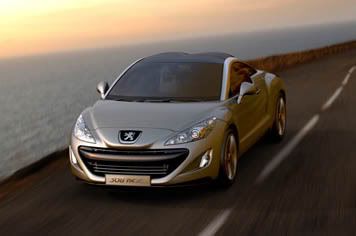
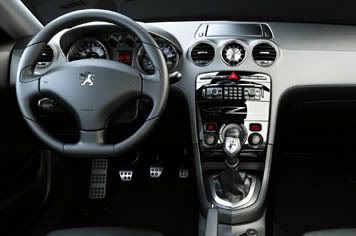
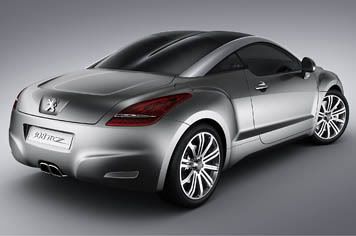 These are the first pictures of the car that will take centre stage on Peugeot's Frankfurt motor show stand this September, and we can exclusively reveal that this isn’t just a concept car, Peugeot’s actually going to build it. Peugeot will put a version of this compact 2+2 coupe into production as part of a plan to revive its fortunes. The car, based on the new 308, should be launched within the next 18 months and will provide Peugeot with a cut-price rival for the Audi TT. It could even revive Peugeot’s credentials as a maker of driver’s cars.
These are the first pictures of the car that will take centre stage on Peugeot's Frankfurt motor show stand this September, and we can exclusively reveal that this isn’t just a concept car, Peugeot’s actually going to build it. Peugeot will put a version of this compact 2+2 coupe into production as part of a plan to revive its fortunes. The car, based on the new 308, should be launched within the next 18 months and will provide Peugeot with a cut-price rival for the Audi TT. It could even revive Peugeot’s credentials as a maker of driver’s cars.
The Frankfurt show super-Pug:
Called 308 RC Z, this compact coupe will make its debut as a concept car at Frankfurt alongside the new 308 hatch and although it’s closely based on the hatchback, Peugeot has cut weight and added power. The RC Z uses aluminium and carbonfibre to slice the 308’s estimated 1300kg kerbweight by 100kg to 1200kg. The RC Z is the same length as the hatch but 25mm wider and slightly lower.
Under the bonnet is a 218bhp version of Peugeot’s turbocharged 1.6-litre four-cylinder petrol engine. This is the more powerful version of the 175bhp engine in the 207 GTi and Mini Cooper S, and under an agreement between BMW and PSA it will be used first in the new Mini Cooper Works next year. Torque is also up by 29lb ft to 206lb ft, with up to 221lb ft available on overboost. CO2 output is 160g/km, 11g/km less than the smaller 207 GTi.
That engine gives the RC a 0-60mph time of 7.0sec and a 50-75mph time of 7.5sec in fifth gear, with a maximum speed of 146mph. The car also has a new six-speed manual gearbox.
Underneath, the RC Z is configured like a 308, with a torsion beam rear axle and a MacPherson strut front. But Peugeot has replaced steel components with aluminium ones to cut weight and, it claims, improve the car’s handling and steering. The coupe also has 59mm wider front and rear tracks than the hatch, which will aid stability. The production version is likely to be very similar to this concept, although it will probably lose the unusual groove in the roof, which improves aerodynamics and helps to create enough downforce to reduce rear-end lift without the need of a spoiler.
When the finished car arrives in two years’ time, prices are expected to start from around £17,000.